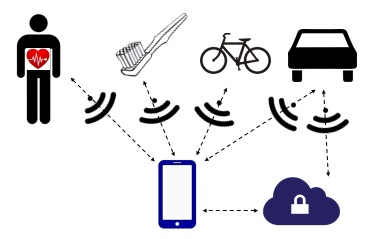Mobile Solutions For The Internet Of Things Raise The Prospects For Edge Computing

Source: Forrester
I recently attended IBM BusinessConnect 2015 in Germany. I had great discussions regarding industrial Internet of Things (IoT) and Industrie 4.0 solutions as well as digital transformation in the B2B segment. One issue that particularly caught my attention: edge computing in the context of the mobile IoT.
Mobility in the IoT context raises the question when to use a central computing approach versus when to use edge computing. The CIO must decide whether solution intelligence should primarily reside in a central location or at the edge of the network and therefore closer to (or even inside) mobile IoT devices like cars, smart watches, or smart meters. At least three factors should guide this decision:
- Data transmission costs. The costs of data transmission can quickly undermine any mobile IoT business case. For instance, aircraft engine sensors collect massive amounts of data during a flight but send only a small fraction of that data in real time via satellite connectivity to a central data monitoring center while the plane is in the air. All other data is sent via Wi-Fi or traditional mobile broadband connectivity like UMTS or LTE once the plane is on the ground.
- Mobile bandwidth, latency, and speed. The available bandwidth limits the amount of data that can be transmitted at any given time, limiting the use cases for mobile IoT. For instance, sharing large volumes of data about the turbines of a large container ship and detailed inventory measurements of each container on board is completely impractical unless the ship is close to a coastal area with high mobile broadband connectivity.
- The time sensitivity of the data. High latency and poor network reliability undermine any mobile cloud-based architecture that depends on time-critical data. For instance, it’s highly unlikely that autonomous driving solutions like the one Daimler is piloting in Germany and the US will base features like braking or lane-changing on mobile cloud computing. Sensors measuring a truck’s surroundings must be able to make decisions regarding braking or lane changes in a split-second. Such trucks must have an onboard server to deal with time-critical data and send only less time-critical data (such as predictive maintenance data) to a cloud-based server.
These three factors are of particular relevance in the context of mobile cloud solutions for IoT. They determine whether a solution should be designed with the server in a central cloud location or much closer to the mobile device. In many instances, it is likely that the smartphone will act as a server and storage “platform” for mobile IoT devices such as wearables, healthcare sensor implants, or smart clothes.
I’m currently working on a report investigating the particulars of mobility in the context of IoT solutions. If you would like to share your thoughts, please reach out to me.
